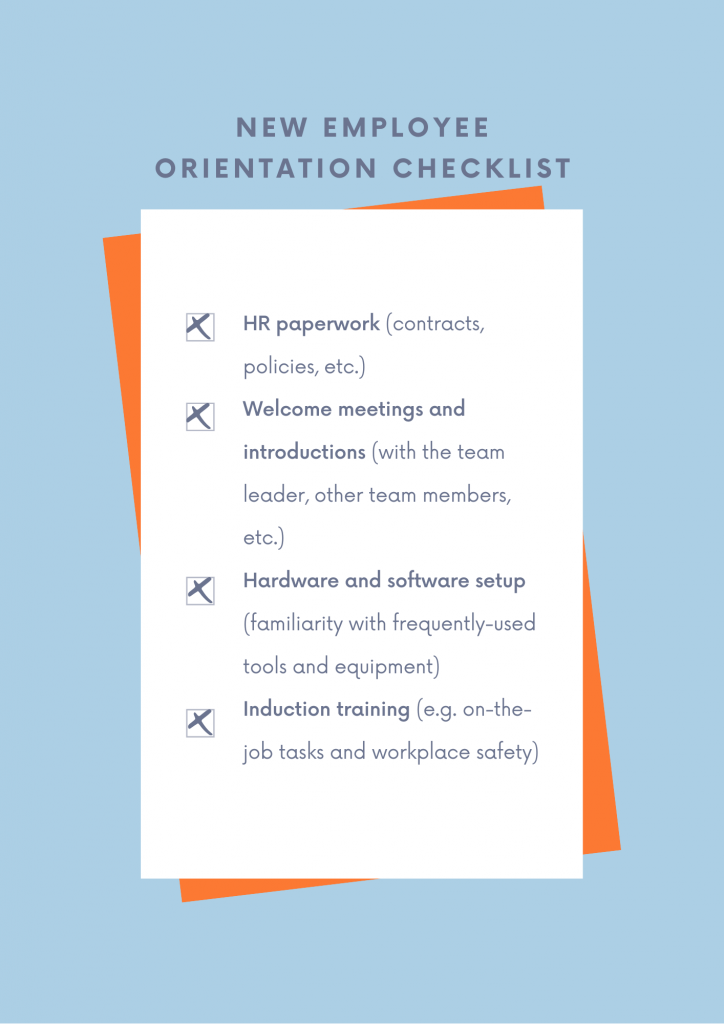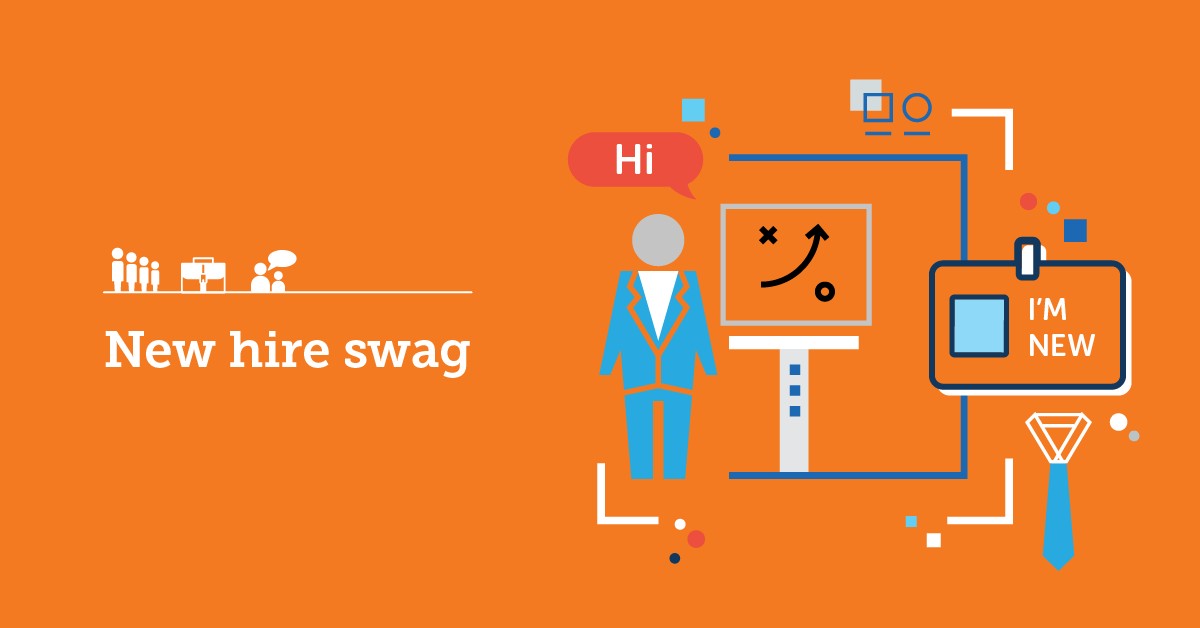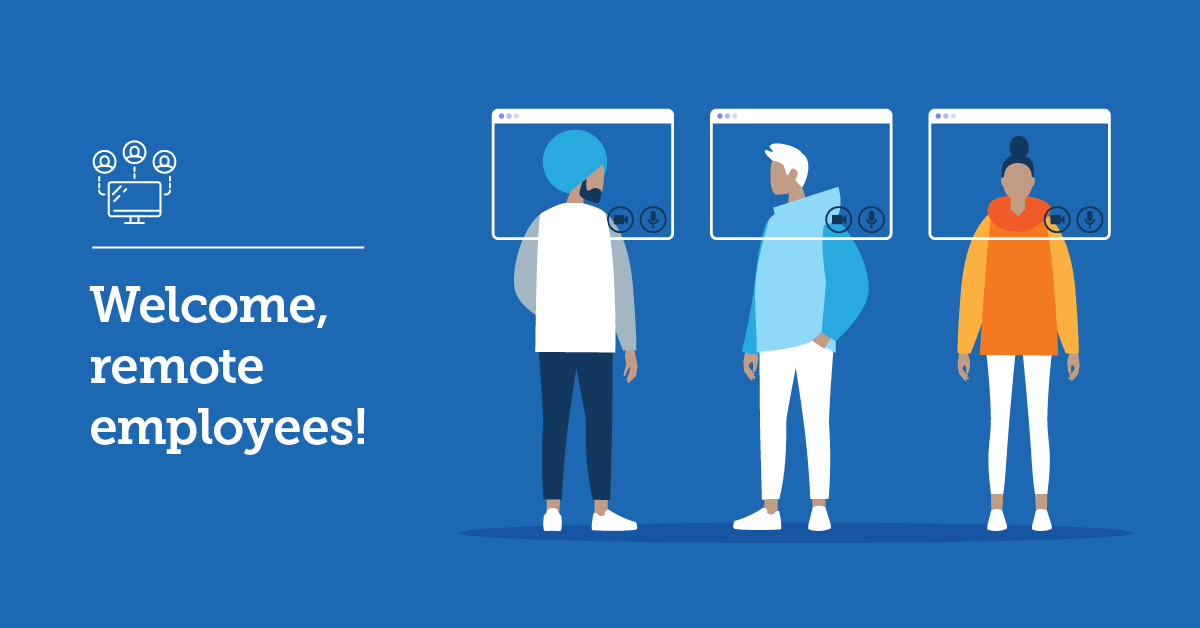There are a lot of new faces at work. You know this means that the company is growing — which is a good thing. But you also know that you’ll need to train all of these new employees—which is a scary thing. Because new employee orientation has such a big impact on staff loyalty and productivity.
You read that a great onboarding experience can improve employee retention by 82%. And that it can take anywhere between 5 and 8 months for a new employee to reach full productivity, depending on their orientation. Also, an impressive 62% of Gen Z employees believe that the onboarding they received successfully equipped them with resources and skills to do perform well in their new role. So you’d really like to follow all the best practices for creating an effective new hire orientation.
You’ve come to the right place. These comprehensive new employee orientation guidelines include everything you need to know about planning and streamlining your new hire orientation process. From this menu, you can jump to the section that interests you the most.
-
- What is new employee orientation?
1.1 How important is new employee orientation?
1.2 What is the purpose of new employee orientation? - What’s the difference between orientation and onboarding?
2.1 How long should new employee orientation last? - How to plan your new employee orientation
3.1 What to include in new employee orientation
3.2 Roles and responsibilities in employee orientation - Conducting online orientation for remote employees
4.1 Help new employees use remote work tools
4.2 Arrange virtual meetings and presentations
4.3 Create an online knowledge repository - How to streamline your new-hire process flow
5.1 Make a new employee orientation checklist
5.2 Use a Learning Management System
5.3 Set consistent standards (and ask for feedback)
- What is new employee orientation?

Chapter 1: What is new employee orientation?
Orientation training for new employees is the process of introducing new hires to their job tasks, company processes, and teams. But it’s also the beginning of a relationship between the employee and their employer. Like any relationship, a shaky start usually leads to an imminent end.
How important is new employee orientation?
Let’s see some examples in order to fully understand why employee orientation and proper onboarding are crucial to your company.
Picture this: every new employee receives a slick, pre-printed welcome pack on their first day. A knowledgeable and friendly mentor eases them into their new work environment and gives them a guided tour of the office. Then, in their own time, employees work through the company’s online orientation course to learn more about the corporate culture and their job responsibilities. Finally, they head out to lunch with their new team.
Now picture this: new hires are greeted by an unfamiliar face at reception, and directed to their silo with a hundred-page employee handbook safely tucked under their arm. After they’ve figured out (quite single-handedly) how to sign into their email, they find instructions from their new boss (whom, by the way, they haven’t seen since the final interview) and get started on their job.
It’s easy to see which of these scenarios would leave the new employee feeling more bewildered, overwhelmed, and alone. The thing is, employees who feel this way are unlikely to grow loyal to the company. More so, without thorough training about the job and company, new hires are likely to take months to reach full productivity in their roles.
When a company’s orientation is more like the second scenario, it totally misses the purpose of new hire orientation.
Looking for the fastest way to simplify your employee orientation?
Build your online training courses in minutes with TalentLMS.
The training platform that users consistently rank #1.
What is the purpose of new employee orientation?
Many companies view orientation as an administrative process, where employees become familiar with the rules, sign their contracts, and get to work. You can almost imagine a manager striking off items from their imaginary new employee orientation checklist, proudly thinking that another demanding task is done. The truth is there’s a lot more to orientation. The real purpose of new hire orientation is to mentally and emotionally integrate employees into the organization, and equip them with the skills, tools, and support they need to reach their potential.
Because with every new hire who joins your company, it’s safe to assume that they want to make a meaningful contribution, that they’d like to feel loyal to their team, and that you should give them all the resources they need to succeed. If these assumptions are difficult to make, chances are that you’ve made some mistakes in the hiring process.
Chapter 2: What’s the difference between orientation and onboarding?
Before we discuss the topics to include in your orientation plan for new employees, we need to make the distinction between orientation and onboarding.
The terms “orientation” and “onboarding” are often used interchangeably, but really, they’re two separate concepts. And you need both.
You can think of new hire orientation as a first date: it’s a one-off event that gives you just enough information to decide whether you might like the person or not. Similarly, orientation is an event that lasts just a few hours or a few days. Its purpose is to introduce new employees to the company, their team, and, of course, their job.
On the other hand, onboarding is like dating. Lasting between 90 days and one full year, onboarding includes training and on-the-job experiences that give employees deeper insights into the company and their job. During onboarding, employees form bonds with their team members, integrate into the company culture, start having ideas and suggestions, and discover ways, not just to perform their jobs, but to improve their performance.
How long should new employee orientation last?
Although orientation is a relatively brief process, it will still take more than a day for new hires to meet their new coworkers and to start feeling comfortable with their new role. So, when orienting and training new employees, a good rule of thumb to follow is: don’t rush the process. Allow for at least one week before you cross off all items on your new employee orientation checklist and move on to official training.
Chapter 3: Planning your new staff orientation program
Now that we understand the purpose of induction training, this next chapter will explore how to make new hire orientation fun and engaging. As with most things, it all starts with a plan!
What to include in new employee orientation
Deciding what to include in your orientation program might seem like an impossible task. There’s so much to learn about the job and the company, and so many people for them to meet. Where do you begin?
Remember that new employees will have 90 days or more to become familiar with tasks, people, and processes during their onboarding. For orientation, though, try to stick to these important topics:

Let’s see in more detail each point of this new employee onboarding checklist:
Paperwork and new hire information
Paperwork might not be the most exciting part of orientation, but it is necessary. From company rules and policies to tax forms, employees need to know the boundaries and expectations of their job and workspace. Make sure to include documents such as a signed offer of employment, your company’s employee handbook, etc.
For a quick and convenient paperwork process, make these documents accessible on your LMS for employees to read and sign. Then, if they ever want to return to these documents, they can locate them in the same place.
Welcome and introductions
A warm welcome goes a long way toward making employees feel like part of the team, especially when it comes from more than one person. All it takes is a small effort from a few people.
To make new hires feel appreciated, send them a signed welcome letter from the CEO. Next, ask their manager to take them on a guided office tour, and to show them where the important meeting rooms, bathrooms, and common spaces are located. Then, to properly introduce them to their team, organize a lunch. This way, new hires can get to know their colleagues in a fun and neutral setting.
Finally, you’ll want to give employees a welcome pack with a few gifts, like branded stationery and a company t-shirt, to let them know how excited you are to have them on the team. Don’t forget your dispersed or remote teams! A welcome kit can do wonders for your remote workforce as well.
Be sure to also include an orientation schedule for new employees to get a clear picture of upcoming activities.
Office access
There aren’t many things worse than arriving at a new job on time, only to find that you can’t get into the building, or park your car. To avoid uncomfortable situations like this, organize parking, access cards, and an office map for new employees on their very first day of work. Remember to share useful details in advance, for example, let your new team members know that on their first day they’ll need to carry their ID and show it to the security guard to enter the building.
Hardware and software
In order to be a productive member of the team, it’s likely that your new employees will need to use tools for communication, project management, time tracking, human resource processes, and possibly even to do their jobs. For example, a digital copywriter might need to learn how to use the company’s SEO tool in order to write high-traffic articles.
Create an online course that shows new hires the ins and outs of the software they’ll be using. This way, each new employee can learn in their own time, and at their own pace. Don’t forget to show them how to use physical tools, too, like printers and phones.
Induction training
Start planning induction training for new employees to learn the skills and knowledge that will make them successful in their work. This could include job-specific technical training, safety training, or soft skills training to align employees with the company values. Don’t leave this for later. Rather, make sure that employees are aware of upcoming training from Day 1 by introducing it during new hire orientation.
Meet TalentLibrary™
A growing collection of ready-made courses that cover the skills
both your remote and in-house teams need for success at work
![]()

Roles and responsibilities in new employee orientation
Orientation might sound like a job for HR. But, in reality, it’s a team effort. When all of the following roles work together, new employees are likely to have the best orientation experience.
It’s best to create a detailed list with all the orientation tasks that need to be completed and who’s responsible for each one. This way, you’ll rest assured that nothing falls through the cracks. For example, you can create a spreadsheet like this:

If you don’t have a template in place, we’ve got you covered. You’ll find below a new employee orientation template that you can download and customize based on your specific needs.
Now let’s see how different teams and team members can ensure a positive orientation experience for new hires.
HR
The HR department plays one of the most important roles, because it creates a new employee orientation template of sorts — or action plan, if you like. Often, HR also organizes the training rooms, the welcome pack, and desk setup, and ensures that new hires have access to the company LMS for onboarding training and other employee training tools.
Moreover, HR should also plan ahead how to engage with remote employees by ensuring they are provided with full access to the essential training topics and tools they need to succeed.
Team manager
The second most important role falls to the employee’s new manager. As the leader of the team, and someone who will interact frequently with the employee, the manager is best placed to make their new team members feel welcome and comfortable. In fact, 20% of new hires worry more about their supervisor’s expectations than their actual jobs. So managers need to set clear goals for new employees during orientation, too.
IT department
There are very few companies left in the world that do not use technology for working, learning, and reporting. So it’s likely that your new employees will need to become familiar with the company’s software applications and LMS. The technical team will play an important role in guiding and supporting new staff as they navigate these technologies.
New employee
This might come as a surprise, but new employees should take responsibility for their orientation experience, too. By fully engaging in new employee orientation training, they’ll learn how to perform their jobs well. Through interactions with their team members, they’ll feel as though they belong. And by asking questions when they’re stuck, new hires will become comfortable with company systems and processes.
Chapter 4: Conducting online orientation for remote employees
Remote employees might have a harder time acclimating and mastering essential on-the-job competencies than their in-house counterparts. Subsequently, orientation and onboarding for remote employees deserve special attention and careful organization.
While onboarding new employees in person enables your workforce to experience a hands-on approach with L&D opportunities, in a hybrid or remote work environment it can be hard to target certain skills gaps and track performance. It’s not impossible, though. This is why a carefully planned virtual orientation is essential.
After their virtual orientation program, new hires must have a good grasp of their job responsibilities, work tools, and company information. Most importantly, they should begin to feel part of the team and form bonds with their new colleagues.
Here are a few tips for a successful online orientation program:
Help new employees use remote work tools
Remote work has risen to prominence thanks to technology. Remote employees rely on communication platforms, video conferencing tools, and project management software to connect with their colleagues and streamline teamwork.
Therefore, a top priority in your virtual orientation is a call with your IT team. Your tech support team will help new hires set up their accounts and download the software necessary and also give them a tour of key features to help them get started.
Arrange virtual meetings and presentations
Don’t assume that one meeting with the new hire’s manager and the rest of the team is enough. Instead, schedule different meetings with different departments and teams. Each team should make a brief presentation to lay out the basics of their function and, when necessary, to explain to your new employee how they will collaborate in the future.
Apart from business meetings, make sure to organize an informal meeting among the closest team members just to chat and introduce yourselves. This will take some of the pressure off and help the new hire see the more fun and relaxed side of their coworkers.
Create an online knowledge repository
Calls and meetings are all good, but new remote hires also need to get their hands on some actual guidelines. Company structure, a virtual office tour, training material, benefits, and company policies — all this information should be documented as well as communicated verbally. Luckily, there’s no shortage of cloud storage solutions to upload and save all sorts of content.
If you prefer an all-in-one solution, a Learning Management System is the right option for you. Using an LMS, you can store and organize all your orientation material in the same place where you deploy your training courses. This eliminates the need for new, and old, employees to search through different platforms (or worse, through emails) to find the information they need. Also, you won’t have to go through the process of creating and sharing all these guides every time you welcome a new team member — each new hire will automatically find everything they need in their training portal.
Chapter 5: How to streamline your new-hire process flow
Knowing the most important topics to include in your new hire orientation program is a good start. Still, even with the most creative ideas and fun activities, your new employee orientation will only be successful if it runs smoothly for all involved.
Here are our top tips for creating a seamless orientation experience.
Make a new employee orientation checklist
After reading these new employee orientation guidelines, you’ll understand exactly what, when, and how new hires learn during their first couple of days on the job. But, as we’ve already discussed, you’re not the only person involved in the orientation program. You’ll need to rely on managers, IT, and other employees across the company to deliver a positive experience.
So, to ensure that all employees receive the great orientation you planned for them, create a checklist of all the activities that new hires need to complete, and who is responsible for each.
Download our new employee orientation checklist template.
Customize it to your needs and try it out next time you welcome a new hire.

By using a checklist, it’s easy to track an employee’s progress through orientation and spot any relevant tasks that haven’t been completed.
Use a Learning Management System
New employee orientation is notoriously fraught with documents and administration. But fortunately, technological advances have made it easier than ever to improve the orientation process. Rather than overwhelming new hires with a sky-high stack of HR forms and contracts, employees can read, sign, and submit everything on the learning management system (LMS).
An LMS is also perfect for delivering and tracking onboarding training, especially as the number of new hires grows. Use your LMS’s gamification features to encourage your new employees to learn faster by playing games, taking quizzes, and earning reward points. Get custom reports and create follow-up tests to ensure employees not only enjoy their online orientation activities but also learn from them. If you have a small team, you can start with a free LMS to try out these features. And as you scale, you can upgrade to a paid plan and build a complete onboarding training experience.
Set consistent standards
New hire orientation should be consistent throughout the company, which means that every person involved in orienting employees should understand the importance and expectations of their role.
To this end, explain the purpose of orientation to managers, IT staff, and team members of the new employee. To make sure that they carry out all of their orientation responsibilities, have them complete an orientation checklist to consult as a guide. If you have a new employee orientation template they can use, all the better. (If not, go back and grab ours!).
…and ask for feedback
Delivering high quality and consistent orientation to all new hires can be tricky, especially as the number of people involved in the orientation process increases. So, the best way to know whether employees find orientation useful is to simply ask them.
Collect feedback from new hires during and after the orientation program. If particular new employee orientation activities are rated poorly, discuss strategies for improvement with the person responsible for those activities. After all, your staff turnover rates and performance could depend on it.
Over to you
We hope that you’ve found all of the best practices for new employee orientation you were looking for in this guide. If you’d like some help getting started, we’ve included an employee orientation checklist template. Let us know how your orientation goes.
Originally published on: 04 Jun 2019 | Tags: Online Employee Onboarding


